EVA Report – January 30th
Crew 274 EVA Report 30-01-2023
EVA # 2
Author: Sarah E. Guthrie, Commander
Purpose of EVA: Training
Start time: 1:00pm
End time: 1:55pm
Narrative: EVA 2 completed MDRS required training at Marble Ritual for approximately 24 mins.
Destination: Marble Ritual
Coordinates (use UTM WGS 84): N4240700, E518750
Participants: Lex Lojek (Engineer), Tyler Hines (GHO), Salina Pena (Astronomer), Noah Loy (Heliophysics)
Road(s) and routes per MDRS Map: Cow Dung Road to Marble Ritual
Mode of travel: Rovers (Curiosity, Opportunity)
EVA Report – January 30th
Crew 274 EVA Report 30-01-2023
EVA # 1
Author: Sarah E. Guthrie, Commander
Purpose of EVA: Training
Start time: 10:25am
End time: 10:59am
Narrative: EVA 1 completed MDRS required training at Marble Ritual for approximately 24 mins.
Destination: Marble Ritual
Coordinates (use UTM WGS 84): N4240700, E518750
Participants: Sarah E. Guthrie (Commander), Nick Pender (HSO), Bill O’Hara (Hab Specialist), Tony DiBernardo (Journalist)
Road(s) and routes per MDRS Map: Cow Dung Road to Marble Ritua
Mode of travel: Rovers (Perseverance, Spirit)
Operations Report – January 30th
Crew 274 Operations Report 1/30/2023
SOL: 1
Name of person filing report: Alexis Lojek
Non-nominal systems: Oven light
Notes on non-nominal systems: Oven light still needs a new bulb. We previously reported that the specifications of the oven light bulb type were emailed to mission support by Crew 272 Engineer.
ROVERS
Spirit rover used: Yes
Hours: 207.5
Beginning charge: 100%
Ending charge: 91%
Currently charging: No
Opportunity rover used: Yes
Hours: 112.2
Beginning charge: 100%
Ending charge: 91%
Currently charging: Yes
Curiosity rover used: Yes
Hours: 219.5
Beginning charge: 100%
Ending charge: 91%
Currently charging: No
Perseverance rover used: Yes
Hours: 254.2
Beginning charge: 100%
Ending charge: 87%
Currently charging: Yes
General notes on rovers: All four rovers were used on EVA during second rover training mission to Marble Ritual. The chargers were set aside upon return to the Hab.
Summary of Hab operations: It was noted that the oven light was not working and that Crew 274 had also reported the same. The oven currently has no bulb in it, but the bulb cover is still present. No showers were taken today.
WATER USE: 46 gallons
Water (static tank): 445 gallons remaining
Static tank pipe heater (On or off): On
Static tank heater (On or off): On
Toilet tank emptied: No
Summary of internet: Nominal
Summary of suits and radios: Suits 1 & 4 were not utilized during EVA suit training due to Suit 1 blowers not turning on and Suit 4 having a crossthreaded coupling. The crossthreaded coupling for the vent fans on Suit 4 was fixed after the EVAs were completed. Suit 1 remains an issue and has not yet been troubleshot. Suits 2, 3, 5, & 6 were utilized during both the first and second EVAs. Helmets were cleaned before and between EVAs and different helmets were utilized for different crew members.
Summary of GreenHab operations: GHO Hines watered plants this morning at 0830-0930 am.
WATER USE: 12 gallons used.
Heater: On
Supplemental light: 4 hours
Harvest: None
Summary of ScienceDome operations: GreenHab Officer Tyler Hines continued setting up his equipment in the ScienceDome.
Dual split: Unknown, request MDRS Support guidance on what this is.
Summary of RAM operations: No operations were conducted in the RAM.
Summary of any observatory issues: N/A
Summary of health and safety issues: N/A
Questions, concerns, and requests to Mission Support: What is the “dual split?” in the ScienceDome? Should we attempt to troubleshoot EVA 1?
GreenHab Report – January 30th
GreenHab Officer: Tyler Hines
Environmental control: heater
Average temperatures: 67.5 F
Hours of supplemental light: 4 hours
Daily water usage for crops: 11.62 gallons
Daily water usage for research and/or other purposes: 0
Water in Blue Tank: 188.38 gallons
Time(s) of watering for crops: 9 am
Changes to crops: N/A
Narrative: Monitored and watered GreenHab crops, including additional watering for the tomato plants due to being particularly dry. Cleaned the interior of pots and beds from dead leaves and debris. Identified and listed items to be harvested the following day.
Harvest: N/A
Support/supplies needed: N/A
Journalist Report – January 30th
Crew 274 Journalist Report 1-30-2023
Sol: 1
Author: Tony DiBernardo, Crew Journalist
Title: The Inner Light
After a successful arrival and ingress into MDRS yesterday, Crew 274 woke up in simulation this morning at 7:30am to the song “Don’t Worry, Be Happy” and a recorded message from Dr. Kristen Miller, inspiring the team with advice and encouragement to embrace the experience. The “Wake Up Song” tradition, dating back to the Gemini program, will live on through the crew as each day they’ll hear a song and message sent to them from a family member or supporter of the program. Then, every morning, each crew member will complete an Emotional Recognition Test and a Psychological Survey that consists of 234 questions to track changes in each crew member over the course of the mission.
The crew consists of 8 members, all with their own experiments:
Commander Sarah “Ceres” Guthrie
Experiment: Evaluating Contingency EVAs and Rescue Techniques for Planetary Surface Missions
Crew Engineer Lex “Kepler” Lojek.
Experiment: Focused breathing and its effects on physiological indicators of stress and performance.
Crew Astronomer Salina “Nova” Pena
Experiment: Generating Multi-bandpass Lightcurve Data on HADS Variable Star v0799 AUR
Crew Astronomer Noah “Phoenix” Loy
Experiment: Analyze Solar Flare, CME, and Daily Space Weather Data
Health & Safety Officer Nick “X-Man” Pender
Experiment: Supply Cache Use for Extension of Human Exploration on Mars
GreenHab Officer Tyler “Houston” Hines
Experiment: Observing Growth Rates Of Space-Exposed Seeds In Martian Simulated Regolith Samples
Hab Specialist, Secondary Engineer Bill “Titan” O’Hara
Experiment: Habitat Design Case Study
Crew Journalist Tony “Iron Man” DiBernardo
Experiment: In-Hab and Extravehicular Media & Outreach
EVA Activity
On the first day of the mission, two training EVAs are required of the crew by MDRS Mission Support to walk through all EVA practices and procedures. Prior to the first EVA, Tony “Ironman” DiBernardo had an issue with the air supply connections being cross-threaded on his EVA suit. We moved to a different suit for the EVA and afterwards, Lex “Kepler” Lojek and Bill “Titan” O’Hara were able to troubleshoot and repair the suit. Both EVA crews used the rovers to drive out to Marble Ritual, a landmark nearby the habitat. The assignment was to perform an hour-long EVA and return safely. The crew members became familiar with the rovers, explored, collected rocks and petrified wood, and acclimated to the new simulated martian landscape.
GreenHab
Tyler “Houston” Hines, Greenhab Officer, began his two experiments in the science dome. His experiments involve growing seeds in a mixture of simulated Mars regolith, organic material and water infused with potassium, nitrogen, phosphorus. The seeds being tested are standard microgreens and seeds from NASA SEEDS experiment, which flew seeds to space aboard the Long Duration Exposure Facility (LDEF), launching in 1984 aboard Space Shuttle Challenger and returned in 1990 by Space Shuttle Columbia. Tyler was advised by HSO Nick “X-Man” Pender on the memory functionality of the Thermo-hygrometer and will continue to water and monitor growth throughout the remainder of the mission.
Astronomy
Crew astronomers Noah “Phoenix” Loy and Salina “Nova” Pena canceled all operations due to cloudy weather and non-optimal viewing conditions, but were able to take required pictures of the Musk Observatory, including the astronomy laptop boxes, the first aid kit and the solar telescope. They plan to continue heliophysics and High Amplitude Delta Scuty (HADS) observations tomorrow, weather permitting.
Hab Design
Bill “Titan” O’Hara started a draft of a habitat design case study report. This report will explore and analyze the effectiveness of the design of the MDRS habitat to inform the design of future habitats. Bill also worked with Salina to take a complete inventory on all food in the hab, identifying and planning our use of food for the remainder of the mission.
Engineering
Lex “Kepler” Lojek took measurements of the water level to find that the crew used more water than was originally allocated per day to have the water supply last for the duration of the mission. Prior to entering simulation, he made a starting measurement of 491 gallons, which gives the crew approximately 35 gallons per day for drinking, showering, dishes, bathroom use, and all other water usage excluding watering plants in the GreenHab. Before 5pm on Day 1, Lex measured a total water tank volume of 445 gallons, coming out to 46 gallons used by the crew so far. Thoughts were thrown around by the crew on water conservation efforts, such as using cooking and dishwashing water for other uses, but the crew agreed to continue for 2 more days without extreme water rationing to create a more accurate estimate of projected daily use.
Health & Safety
Health & Safety Officer, Nick “X-Man” Pender, will be conducting an experiment to implement supply caches along EVA routes to set a baseline for safe travel distances by foot. Identifying these limits will ensure that no terrestrial astronaut will be without supplies should an emergency occur while on EVA. Today, Nick tested the operability of an in-suit hydration system and confirmed that the proposed hydration hose and GU Energy gel pack can indeed fit into EVA helmet. He plotted the route for tomorrow’s EVAs which will establish a 30-minute hiking distance baseline and he prepared the GPS equipment for crew use on all future EVAs. During dinner, Nick alerted Mission Control of a broken oven knob that wouldn’t allow us to turn the stove off on one burner. Ultimately, we pulled of the knob and forced the knob to the off position with pliers.
We ended the day cooking spaghetti with dehydrated bean-bolognese pasta and parmesan while watching Star Trek TNG S5E25: The Inner Light. Tomorrow, we look forward to clear skies and safe EVAs. Ad Martes!
Sol Summary Report – January 30th
Crew 274 Sol Summary Report 01-31-2023
Sol: 1
Summary Title: Training Day – Extra-vehicular activities (EVA)and Martian Land Rovers
Author’s name: Sarah E. Guthrie “Ceres”, Commander
Mission Status: Possible weather impact for two requested EVAs on 1-31-2023, standing by for MCC approval.
Sol Activity Summary: Crew completed required EVA and rover training at Marble Ritual. EVA 1 departed habitat at 10:25am which was 25 minutes past the requested deployment time. Complications with EVA suits caused delays (see Anomalies in work and Operations Report). EVA 1 consisted of crew members: CDR – Guthrie (EVA 1 Lead), O’Hara, Pender (HSO) and DiBernardo on rovers Spirit and Perseverance. EVA 1 returned to habitat at 10:59am to meet the approved EVA request. EVA 2 deployed on time at 1:00pm with crew members Lojek (EVA 2 Lead), Loy, Pena and Hines on rovers Curiosity and Opportunity. EVA 2 returned to habitat at 1:55pm. The Solar Observatory was unveiled and inspected per MDRS Staff guidance and will be activated tomorrow. Crew experienced a small kitchen fire when the stovetop knob ceased to operate properly, MDRS Support guidance advised using pliers to turn the burner off. There was no damage to personnel or habitat. Additionally, Engineer Lojek evaluated the 500 gal water reservoir, it is estimated the crew has used approximately 45 gals of water in 24 hours. The crew is discussing water conservation efforts to extend the life of the reservoir to EOM.
Look Ahead Plan: Rain received this afternoon may impact EVA 3 and 4 requests due to muddy conditions. Should this occur, Crew 274 will shift mission schedule to habitat maintenance (cleaning), individual research projects, and mission planning for Sol 3 EVA requests.
Anomalies in work: EVA Suit #1 fan is inop. Engineer Lojek and Hab Specialist are investigating the issue. Oven light inop (noted in Operations Report).
Weather: Sunny, highs -0.5C, low -7C
Crew Physical Status: Optimal
EVA: EVA 1 and EVA 2 completed for training at Marble Ritual.
Reports to be filed: Sol Summary, Operations Report, Green Hab Report, Journalist Report, and Astronomer Report.
Support Requested: Food inventory complete, separate request to follow.
Science Report – January 29th
Crew 274 – ARG-1M
Crew Commander: Sarah E. Guthrie (USA)
Crew Engineer: Alexis J. Lojek (USA)
Crew Astronomer: Salina Pena (USA)
Health and Safety Officer: Nicholas Pender (USA)
Crew Journalist: Anthony DiBernardo (USA)
Green Hab Officer: Tyler Hines (USA)
Heliophysics: Noah Loy (USA)
Habitat Structure Specialist: Bill O’Hara
MDRS Crew 274 is a pioneering academic analog research group from the American Public University System (APUS) under the designation ARG-1M. The APUS Analog Research Group (AARG) leads space study undergraduate, graduate, and doctoral students in multidisciplinary scientific research investigations analogous to the space environment. This crew aims to examine extra-vehicular (EVA) activity logistics, EVA contingency protocols and methodologies via rescue devices, mindfulness and focused breathing, solar and variable star studies, and terrestrial spaceflight habitat efficiency.
Science Report – January 29th
Sarah E. Guthrie: Commander (Baltimore, MD, USA)
Sarah E. Guthrie is a Space Studies (astronomy) graduate student in the School of Science, Technology, Engineering and Math with American Military University. She is a three-time analog astronaut and the first female commander for the APUS Analog Research Group. In addition to her academic studies, she is also a 20-year active-duty veteran in the United States Air Force. Her unique deployment experience with multiple tours to Iraq and Afghanistan provided her an opportunity to bring combat rescue techniques to needed lunar surface operations. Additionally, she is a co-investigator on various projects that focus on adaptive mobility load distribution systems for extra-vehicular activities, astronaut resource impact, and behavioral health studies for long-term space flight. She is also a research advisor for Space4All on analog research projects at terrestrial habitats. Her call sign is Ceres.
Alexis “Lex” Lojek: Crew Engineer (Oahu, HI, USA)
Lex is a second-year Master’s thesis student within the School of Science, Technology, Engineering, and Mathematics at American Military University. His research is in the realm of Spaceflight Human Factors and is focused on measurement of stress using physiological factors, specifically heartrate variability, through the use of a Garmin VivoSmart 4 device, and a potential mitigation for stress – focused breathing. He graduated with a degree in Applied Science and Technology from Thomas Edison State University in 2020. He is Active Duty in the United States Navy and has been for over 17 years. During his time as a US Navy Sailor, he has deployed four times; three as an Aviation Electronics Technician for the F/A-18F Super Hornet onboard three aircraft carriers, and once to Djibouti City, Djibouti as a Cryptologic Technician. He has hopes to pursue a commission into the US Space Force as a Space Operations officer after completion of his graduate school degree in June. His crew call sign is Kepler.
Nicholas Pender: Health and Safety Officer (Brownsville, TX, USA)
Nicholas Pender is a second-year master’s thesis student in the School of Science, Technology, Engineering and Math at American Military University. He also has a Bachelors of Science in Supply Chain, Logistics, and Transportation Management at Bellevue University. His research is focused on the application of supply caches to extend extravehicular activities (EVAs) on Mars and leveraging supply cache technology as a basis for future EVA policy. Nicholas is a Logistics Planner in the U.S. Air Force and an Education with Industry Fellow at Space Exploration Technologies, Corp (SpaceX). His call sign is X-Man.
Noah Loy: Heliophysics (Denver, CO, USA)
Noah Loy is a Space Studies and Civil Engineering undergrad at the American Military University and the University of Colorado, respectively. Noah is researching heliophysics phenomena to analyze space weather and its implications for orbital assets. Noah is a space engineer and intelligence analyst for the United States Space Force, where he is also collaborating with multiple DoD Space Test Programs researching space vehicle development and orbital Starlink internet reliability. His crew call sign is Phoenix.
Tony DiBernardo: Media & Communications (Mission Viejo, CA, USA)
Tony DiBernardo is a Space Studies grad student at the American Public University. Currently, he focuses his education and outreach to educating the general public about space on platforms like Youtube, Instagram, and Podcast form. In this mission, Tony will take high fidelity footage of the Mars analog environment for use in experiment spotlights, documentary, daily vlogs, and educational resources for social media. His crew call sign is Ironman.
Salina Peña: Crew Astronomer (Pier Pont, South Dakota, USA)
Salina Peña is a master’s student at American Public University. Her interest is in the field of astronomy. She is currently working on her thesis in the area of Variable Stars. As a student, she participates in the APUS Supernovae group as a team lead and processing images. Salina holds another master’s degree focusing on education with a certification in STEM. Currently, she is a middle school science educator. After completing the Space Studies Master’s program at APUS, she will continue her education, looking for a Ph.D. program at a university in astronomy or astrophysics. Her crew call sign is Nova.
Tyler Hines: GreenHab Officer (Parkersburg, West Virginia, USA)
Tyler Hines is an undergraduate student at American Public University pursuing a Bachelor of Science in Space Studies concentrating in Aerospace Science and a minor in Business Administration. As an active extracurricular student, he currently serves both as the university’s Students for the Exploration and Development of Space (SEDS) President and Chief of Staff for the Analog Astronaut Research Group (AARG). In his spare time, he volunteers as a docent for the American Space Museum in Florida and as a member of NASA’s Solar System Ambassador Program, where he conducts outreach presentations to the general public on the story of the nation’s space program. During the mission, his research focus will be to conduct germination studies on long-duration space-exposed seeds in simulated Martian regolith samples. His
crew call sign is “Houston”.
William O’Hara: Habitat Structure Specialist (Loveland, CO, USA)
Bill worked at the Johnson Space Center in Houston Texas for 20 years. During that time he held a variety of positions including astronaut instructor, MCC flight controller for NASA’s International Space Station program, Orion Life Support System Lead, and advanced life support systems development project engineer. He relocated to Denver Colorado in 2018 to develop orbital and lunar habitats and landers for Sierra Space. Currently, Bill is the Lunar Habitat Formulation lead for Blue Origin’s Advanced Development Group. He specializes in the design and development of deep space and planetary surface habitats as well as robotic landing spacecraft. Bill is a part-time instructor for the American Public University System’s Space Sciences department and supports the APU Analog Research Group as a faculty advisor. Bill is also a part-time PhD student at the University of North Dakota where he is researching the development of a habitat architecture that could enable humans to live on Titan, Saturn’s largest moon. A veteran of NASA’s human test subject program, he flew on nine flights aboard the KC135 Vomit Comet. He has been a crewmember on three analog missions. In 2014 he was a member of the third crew to live in NASA’s Human Exploration Research Analog (HERA) habitat. In 2018 he was a member of an expedition to the Haughton Mars Project Research Station (HMPRS) located on Devon Island in the high Canadian Arctic. In 2021 he served as a crewmember to the Hawaii Space Exploration Analog and Simulation (HI-SEAS) as well as the University of North Dakota’s Inflatable Lunar-Mars Analog Habitat (ILMAH). His crew call sign is Titan.
Sol Summary Report – January 29th
Crew 274 Sol Summary Report 01-29-2023
Sol: 0
Summary Title: ARG-1M successful landing at Mars Desert Research Station (MDRS)
Author’s name: Sarah E. Guthrie (“Ceres”), Commander
Mission Status: Possible weather impact for requested EVAs, standing by for MCC approval.
Sol Activity Summary: ARG-1M arrived at MDRS 11:48am and downloaded equipment. At 3:00pm, ARG-1M received habitat (including RAM, Science Dome and Greenhouse), rover, communications, extra-vehicular activity, and safety training. Training was completed at 6:40pm.
Look Ahead Plan: Current projected weather conditions may impact Sol 1 EVA training. Two EVAs are required to complete the training, however possible snow may eliminate second (mid-day) EVA requests. Should this occur, ARG-1M will shift mission schedule to habitat maintenance (cleaning), individual research projects, and mission planning for Sol 2 EVA requests.
Anomalies in work: None
Weather: Sunny, highs 6.1C, low -22.2C; partially cloudy, winds 3 mph (windy)
Crew Physical Status: Optimal
EVA: None
Reports to be filed: Sol Summary, Operations, HSO, Mission Plan, Crew Bios, Crew Pictures, and Crew Mission Patch.
Support Requested: None


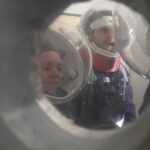
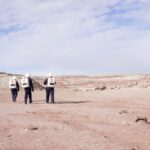
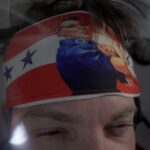
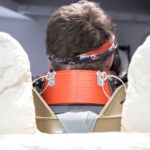
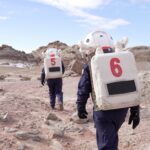
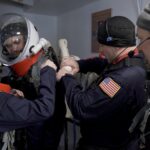

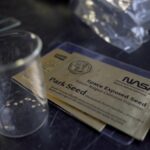
You must be logged in to post a comment.